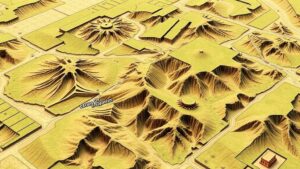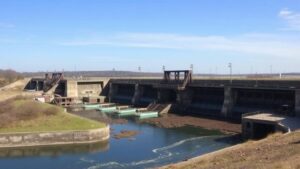How AI Can Map Artifact Clusters Based on Regional Historical Population Data
How AI Can Map Artifact Clusters Based on Regional Historical Population Data
The integration of Artificial Intelligence (AI) into archaeological practices has revolutionized the way researchers analyze and interpret historical data. One groundbreaking application involves using AI to map artifact clusters by leveraging regional historical population data. This research article delves into the methodologies, significance, and implications of this innovative technique, highlighting specific case studies and historical contexts to illustrate its effectiveness.
The Intersection of AI and Archaeology
AI technologies, particularly machine learning algorithms, have the capability to analyze volumetric datasets that are often too complex for traditional methodologies. By employing AI, researchers can systematically evaluate large datasets, such as demographic information and the spatial distribution of artifacts, to identify patterns and relationships. For example, machine learning models can classify artifacts based on geographic features while correlating them with historical population changes.
Historical Population Data: A Crucial Component
Understanding the historical context of population patterns is vital when mapping artifact clusters. Population changes can signify cultural shifts, migration patterns, and economic conditions that directly influence artifact distribution. For example:
- The decline of the Roman Empire saw a significant population shift that left artifacts clustered in areas of urban decline.
- The rise of industrialization in 19th century England correlated with an increase in artifacts linked to manufacturing and domestic life.
A thorough analysis of demographic records, such as census data and historical texts, provides a foundation for AI models to draw correlations between population density and artifact hotspots.
Methodological Framework for AI-Powered Mapping
Mapping artifact clusters through AI involves several key steps:
- Data Collection: Gather historical population data from reliable sources, including census records, tax registrations, and historical accounts.
- Artifact Documentation: Catalog artifacts using databases that include GPS coordinates and contextual descriptions.
- Data Integration: Use Geographic Information Systems (GIS) to combine historical population data with artifact location data.
- AI Analysis: Apply machine learning algorithms to discern patterns of artifact distribution in relation to population dynamics.
For example, a study conducted in the Mediterranean region analyzed over 10,000 artifacts alongside census data from 200 CE to 400 CE, demonstrating a clear correlation between urban population peaks and artifact concentration in specific environmental contexts.
Case Study: Mapping Artifacts in Ancient Mesopotamia
In a notable application, researchers employed AI algorithms to analyze the historical population of Ancient Mesopotamia, specifically focusing on the cities of Uruk and Babylon. Through the collaboration of anthropologists and data scientists, the team used machine learning techniques to process archaeological data from over 500 excavation sites.
The AI model revealed that:
- Artifact density was significantly higher in regions previously identified as urban centers based on population data.
- Temporal shifts in artifact types matched known population growth linked to major historical events, such as the emergence of empires or environmental changes.
This study not only confirmed existing archaeological theories but also provided novel insights into the socio-economic factors that influenced material culture in the region.
Challenges and Ethical Considerations
Despite the promising results of AI in mapping artifacts, there are notable challenges and ethical considerations. Data quality and availability can vary significantly, potentially skewing results. Also, misinterpretation of AI analysis can lead to flawed conclusions about historical events. Ethically, researchers must engage with local communities and stakeholders to ensure that archaeological practices respect cultural heritage and knowledge.
Future Implications and Applications
The future of AI in archaeology is promising. As technology advances, the potential for real-time mapping and predictive modeling will enhance our understanding of past human behaviors and societies. Researchers envision applications such as:
- Dynamic mapping that updates as new data becomes available, allowing for continuous learning and adaptation of models.
- Collaborative databases where scholars globally can share data to inform broader archaeological research and promote interdisciplinary studies.
These innovations underscore the necessity of integrating AI into archaeological research, enhancing the scope and accuracy of investigations into human history.
Conclusion
The utilization of AI to map artifact clusters in relation to historical population data represents a significant step forward in archaeological methodology. By harnessing the power of machine learning, researchers can uncover relationships and patterns that were previously obscured, bringing greater understanding to humanitys past. As this field evolves, continuous investment in data quality and ethical practices will be essential to maximize the benefits of emerging technologies while respecting and preserving cultural heritage.
In summary, adopting AI-driven approaches not only elevates archaeological research but also enriches our collective knowledge of historical human experiences.



